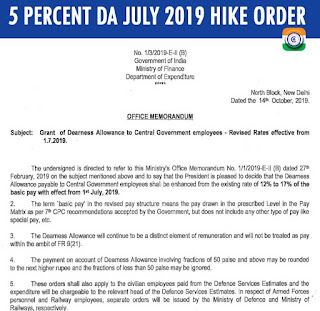Finmin to initiate Budget
exercise next week
Work on India’s first post-GST
Union Budget 2018-19 will start
next week with the finance
ministry issuing timelines for
different processes that will
culminate with its presentation
in February.
Finance Minister Arun
Jaitley arrived at the
parliament on Wednesday for
Budget.
It may also
be the current government's last
full-fledged Budget as general
elections are due in 2019.
Even though independent
India’s biggest tax reform of
GST was implemented from July 1,
the Budget for 2017-18 (April-
March), had followed the
practice of tax revenue
projections under the heads of
customs duty, central excise and
service tax alongside direct tax
numbers.
With excise
duty and service tax being
subsumed in the Goods and
Services Tax (GST), the
classifications will undergo
change, an official said.
While a new
classification for revenues to
be accrued from GST will be
included in the Budget for next
fiscal, for the current year two
sets of accounting may be
presented - one for actual
accruals during April-June for
excise, customs and service tax,
and the other for July-March
period for GST and customs
duty.
The official
said that since the GST rates
are decided by a GST Council,
headed by Union Finance Minister
and comprising of
representatives of all states,
the Budget for 2018-19 will not
have any tax proposals
concerning excise and service
tax levies.
Only
proposals for changes in direct
taxes - both personal income tax
and corporate tax, besides
customs duty - are likely to be
presented in the Budget along
with new schemes and programmes
of the government.
This will be Finance Minister
Arun Jaitley's 5th Budget in a
row.
It would also be
the last full Budget of the
BJP-led NDA government before
the 2019 General Elections. As
per practice a vote-on-account
or approval for essential
government spending for a
limited period is taken in the
election year and a full-fledged
budget presented by the new
government.
While P
Chidambaram had presented the
previous UPA government's vote-
on-account in February 2014,
Jaitley had presented a full
budget in July that year.
The official said the
finance ministry will next week
issue the Budget circular and
start consultations with other
ministries from October for
Revised Estimates (RE) of
expenditure for the current
fiscal.
The Budget
Circular contains the timelines
for submission of information of
budget requirements to the
Ministry of Finance along with
prescribed formats.
The ministries will have to
provide the actual money spent
in 2016-17 along with the budget
estimates and Revised Estimates
for current fiscal.
Along with this, they have to
give the Budget they are
expecting for 2018-19 as well,
the official added.
Scrapping a colonial-era
tradition of presenting the
Budget at the end of February,
Jaitley had for the first time
presented the annual accounts on
February 1, 2017.
With the preponement of
Budget, ministries are now
allocated their budgeted funds
from the start of the financial
year beginning April.
This gives government
departments more leeway to spend
as well as allow companies time
to adapt to business and
taxation plans.
Previously, when the Budget
was presented at the end of
February, the three-stage
Parliament approval process used
to get completed some time in
mid-May, weeks ahead of onset of
monsoon rains.
This
meant government departments
would start spending on projects
only from August-end or
September, after the monsoon
season ended.
Besides
advancing the presentation date,
the Budget scrapped the Plan and
non-Plan distinction and merged
the Railway Budget with it,
ending a nearly century-long
practice.
PTI











